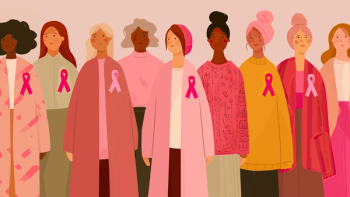
Metastatic Breast Cancer Heroes™
- CURE® Metastatic Breast Cancer Heroes™ 2021 Essay Book
- Volume 1
Building Bridges of Inclusion in Metastatic Breast Cancer Care
A man describes his wife’s tireless efforts to advocate for people of color in the metastatic breast cancer field, where many still face disparities within care, inclusion in clinical trials and survival outcomes.
Things change because people become tired of the same old, same old.
Stephanie L. Walker, B.S.N., spent her working career helping people as a nurse in the pediatric intensive care unit, emergency department and intensive care unit, as an instructor and as a hospice nurse. At every step of the way, she charged herself with ensuring the patients under her care were treated with care and compassion and in line with the Golden Rule. She worked to ensure that the students in her nursing classes understood the importance of following those tenets. When her health forced an early retirement, she struggled to find purpose in her life, for she had always been a giver.
A few years ago, the late Katherine O’Brien reached out to her about advocacy and told Stephanie that she “was going to put her out there.” As Stephanie’s involvement as a metastatic breast cancer advocate continued to grow, it became obvious to her that there was an absence of color in a number of areas. She began to ask questions of organizations: “How can you advocate for a person of color when you have no one in your leadership who reflects people of color?” She pushed for inclusion on committees and boards and volunteered to participate in programs presented by organizations such as Susan G. Komen.
In medically underserved eastern North Carolina, Stephanie became the face and voice of the metastatic breast cancer community and she worked with civic groups, church groups and businesses to ensure that everyone understood that inclusion helps everyone when the battle with metastatic breast cancer is underway.
To that end, she chaired the MBC Alliance’s BECOME project in 2021 to ensure Black people are better represented in cancer research. Building on a 2019 project conducted by Marina Kaplan, an epidemiologist who lived with metastatic breast cancer, BECOME was a research initiative designed to find solutions within the Black community.
The data collected tells a disturbing story. In the United States, the mortality rate for non- Hispanic Black women with breast cancer is 40% higher than for non-Hispanic White women. And while clinical trials help improve outcomes and survival, Black people represent only 3% to 6% of patients in all cancer clinical trials.
The survey responses will help patients make more knowledgeable decisions, educate doctors on how to support patients in joining trials and help researchers understand and design clinical trials in a way that encourages Black participation.
Stephanie works every day to ensure that the voice of every person with metastatic breast cancer is heard equally. As a person of color, she understands the disparities faced by many — in the waiting room, the doctor’s office, the board room of the pharma conducting the trial and, sadly enough, in the organizations that say they advocate equally for all. And just as she battles her cancer daily, she also fights daily to ensure that everyone with metastatic breast cancer has an equal opportunity.
Stephanie Walker never set out to become an advocate, but it is a role she has embraced and one in which she has grown as she works to ensure an inclusive and diverse treatment arena.
For more news on cancer updates, research and education, don’t forget to
Articles in this issue
almost 4 years ago
Passion and Persistence in the Face of Metastatic Breast Canceralmost 4 years ago
Ending Metastatic Breast Cancer for Everyonealmost 4 years ago
Compassionate Guidance Through a Cancer Clinical Trialalmost 4 years ago
Turning Sorrow Into Joy: The Oncologist Who Gave My Life Back



